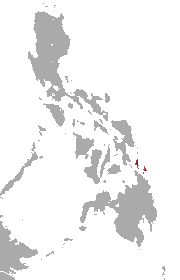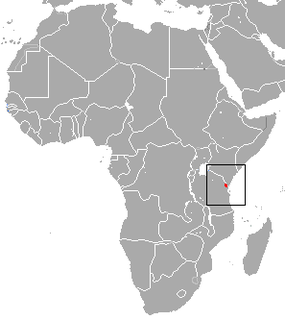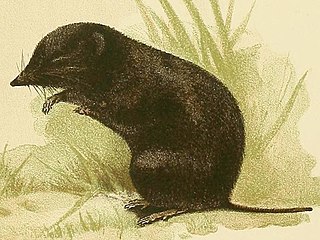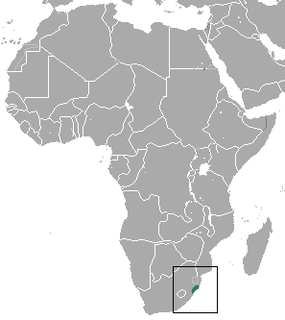
An IUCN Red List Critically Endangered (CR) species is one that has been categorized by the International Union for Conservation of Nature as facing an extremely high risk of extinction in the wild. As of 2021, of the 120,372 species currently tracked by the IUCN, there are 8,404 species that are considered to be Critically Endangered.

Kelaart's pipistrelle is a species of vesper bat.

The Dinagat gymnure is a species of mammal in the family Erinaceidae. It is endemic to the Philippines.

The Bornean water shrew is a species of mammal in the family Soricidae. It is endemic to Malaysia. Its natural habitat is rivers. It is threatened by habitat loss.

The Mindanao shrew is a species of mammal in the family Soricidae. It is endemic to the Philippines. Its natural habitat is subtropical or tropical dry forests. It is threatened by habitat loss.

Buettikofer's shrew is a species of mammal in the family Soricidae. It is found in southern Nigeria and scantly present in Ivory Coast, Ghana, Guinea, Liberia and Sierra Leone. Its natural habitat is subtropical or tropical moist lowland forests. It is threatened by habitat loss.

The Congo white-toothed shrew is a species of mammal in the family Soricidae. It is found in Democratic Republic of the Congo and Uganda. Its natural habitat is subtropical or tropical moist lowland forests. It is threatened by habitat loss.

The desperate shrew is a species of mammal in the family Soricidae. It is endemic to Tanzania. Its natural habitat is subtropical or tropical moist montane forests. It is threatened by habitat loss.

The smoky white-toothed shrew is a species of mammal in the family Soricidae. It is endemic to Kenya. Its natural habitat is subtropical or tropical moist montane forests. It is threatened by habitat loss.

The Tanzanian shrew is a species of mammal in the family Soricidae. It is endemic to Tanzania. Its natural habitat is subtropical or tropical moist montane forests. It is threatened by habitat loss.

Babault's mouse shrew is a species of mammal in the family Soricidae found in Burundi, the Democratic Republic of the Congo, and Uganda. Its natural habitat is subtropical or tropical moist montane forests. It is threatened by habitat loss.

The montane mouse shrew is a species of mammal in the family Soricidae endemic to Uganda. Its natural habitats are subtropical or tropical moist montane forests and swamps. It is threatened by habitat loss.

Sclater's mouse shrew is a species of mammal in the family Soricidae endemic to South Africa. Its natural habitats are subtropical or tropical moist lowland forests and swamps. It is threatened by habitat loss.

The Chinese shrew or dusky shrew is a species of mammal in the family Soricidae. It is endemic to China, where it occurs in Gansu, Sichuan, and Shaanxi. Its natural habitat is subtropical or tropical dry forests. It is threatened by habitat loss.

The Bioko forest shrew or Isabella's shrew is a species of mammal in the family Soricidae found in Cameroon and Equatorial Guinea. Its natural habitats are subtropical or tropical moist montane forest and subtropical or tropical high-altitude grassland. It is threatened by habitat loss.

Heliogomphus is a genus of dragonflies in the family Gomphidae.
Virotia neurophylla is a species of plant in the family Proteaceae. It is endemic to New Caledonia. It is threatened by habitat loss. It has recently been transferred to the genus Virotia, which is also endemic to New Caledonia.

The Sri Lanka drongo or Ceylon crested drongo, is a species of bird in the family Dicruridae. It is endemic to Sri Lanka. It was previously considered a subspecies of the greater racket-tailed drongo. Its natural habitats are subtropical or tropical moist lowland and montane forests.
This page is based on this
Wikipedia article Text is available under the
CC BY-SA 4.0 license; additional terms may apply.
Images, videos and audio are available under their respective licenses.

















